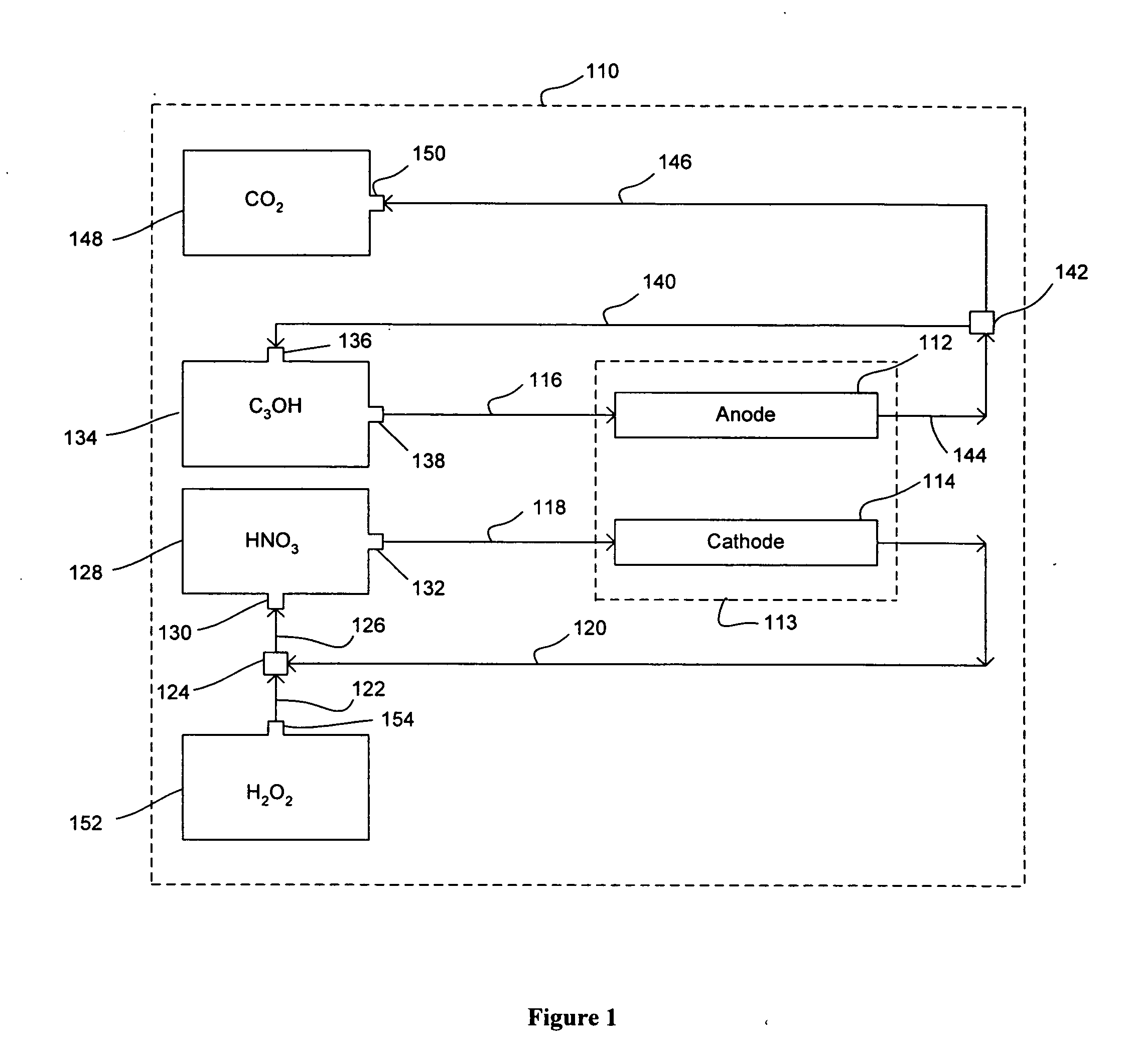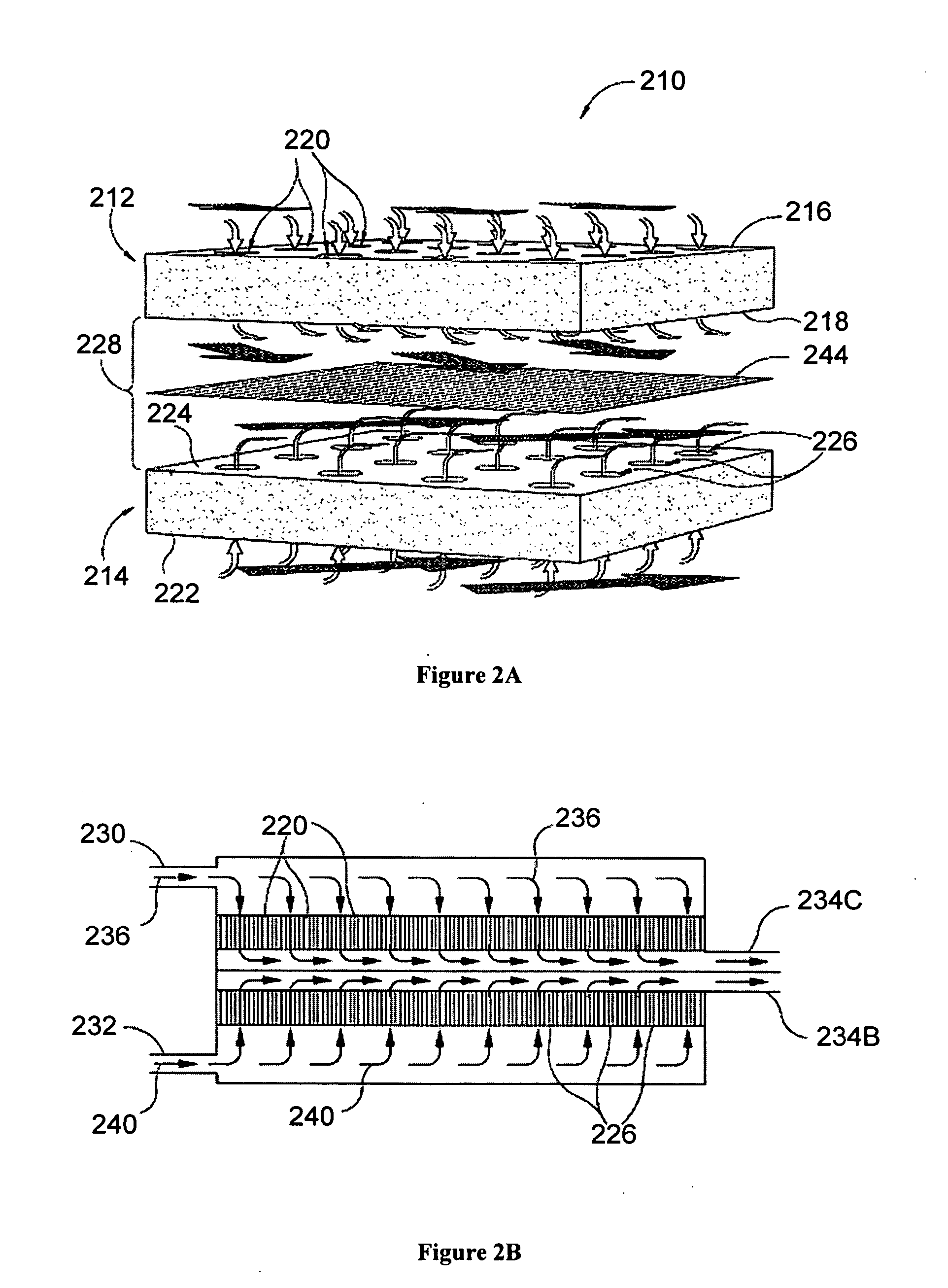Nitric acid regeneration fuel cell systems
a fuel cell and nitric acid technology, applied in the field of fuel cells, can solve the problems of not meeting the concomitant problems of existing fuel cell technology, fuel cell systems are not optimal for working within a closed recirculating microfluidic, and existing fuel cell technology has not addressed many of the concomitant problems
- Summary
- Abstract
- Description
- Claims
- Application Information
AI Technical Summary
Benefits of technology
Problems solved by technology
Method used
Image
Examples
example 1
Performance of Porous Silicon-Based Cathode Reacting with Nitric Acid Flowstream
[0049] An investigation was conducted to determine the performance characteristics associated with a cathode half-cell made from a porous silicon-based substrate. For our investigation, a single 2 cm by 2 cm square coupon electrode having an 0.89 cm by 0.89 cm active porous hydrodynamic flow-through region was made by HF anodic etching of a silicon wafer etching. In this regard, an n-type silicon wafer having a resistively of 23-27 ohm-cm, a (100) crystal orientation, and a thickness of 525 μm was initially masked and etched with KOH to form an ordered array of etched pits (each pit of about 5 μm in diameter). The silicon substrate was then etched with 4 wt % HF—H2O solution with an additional 1 vol % (of the HF solution) surfactant (NCW-1001, Wako Chemicals, Inc., USA) at a current density of about 10 mA / cm2 at 14° C. A potential of 1.4 V (min) to 6 V (max) was applied with backside illumination at 880...
example 2
Regeneration with a Hydrogen Peroxide Flowstream
[0052] A further investigation was conducted in order to demonstrate the feasibility of regenerating catholyte effluent flowstreams produced in a manner similar to those of Example 1. More specifically, various concentrated hydrogen peroxide flowstreams were mixed together with various catholyte effluent flowstreams via small tubing at a reaction zone and it was repeatedly demonstrated that an approximate 78% conversion rate of NO back to HNO3 could be achieved.
PUM
| Property | Measurement | Unit |
|---|---|---|
| thickness | aaaaa | aaaaa |
| flow rate | aaaaa | aaaaa |
| porosity | aaaaa | aaaaa |
Abstract
Description
Claims
Application Information
 Login to View More
Login to View More - R&D
- Intellectual Property
- Life Sciences
- Materials
- Tech Scout
- Unparalleled Data Quality
- Higher Quality Content
- 60% Fewer Hallucinations
Browse by: Latest US Patents, China's latest patents, Technical Efficacy Thesaurus, Application Domain, Technology Topic, Popular Technical Reports.
© 2025 PatSnap. All rights reserved.Legal|Privacy policy|Modern Slavery Act Transparency Statement|Sitemap|About US| Contact US: help@patsnap.com



